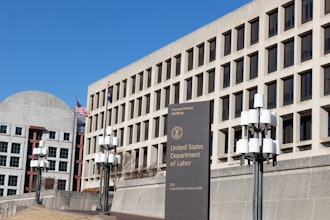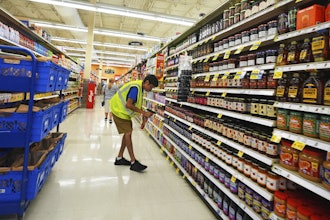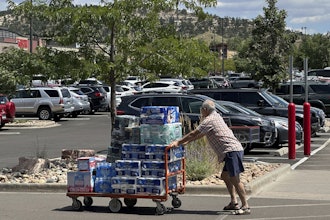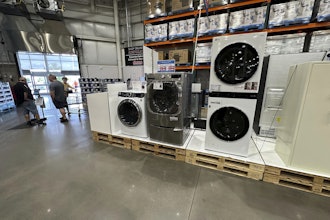
Oil prices are turbulent. For the many distributors who rely on oil-based transportation, and whose paper-thin profit margins are liable to vanish beneath a sudden increase in overhead, such turbulence is of no small concern. Indeed, the cost of oil has exceeded $100 per barrel seven times in the past two decades. If that trend continues – and it has shown no signs of abating thus far – distributors will have to do more than merely wait out the tough times.
But what, exactly, are distributors meant to do? Fortunately for the proactive executive, there are proven means of protecting against the volatile cost of oil without taking rash or infeasible leaps. By consistently analyzing the oil market to identify when the risk is at its highest, and by responding to that information in a strategic and measured way, distributors can adjust for spikes in cost months before they occur.
To that end, here is a brief distributor’s guide to managing dependence on oil:
Predicting the Oil Market
Distributors cannot defend against the oil market until they have some way of monitoring it. While most distributors can likely benefit from becoming less oil-dependent in the long run, very few have excess time and resources to invest in managing a risk that they cannot foresee. Finding clear and actionable market predictions from dependable sources is therefore the first step toward reducing vulnerability, and will inform every subsequent effort.
The simplest way to source market predictions is to solicit professional services from industry analysts who specialize in gathering and processing oil-market data — though this is likely to come at a price. Distributors can, likewise, subscribe to market reports from organizations like the International Energy Agency or the Energy Information Administration, or choose to monitor data and forecasts from commodity exchanges, investment banking firms, government departments and international agencies.
Distributors may also choose to produce their own data by collaborating with academic institutions or market research firms, although a raw-data approach will require analysts or big-data software to convert numbers into actionable insights. In the same vein, distributors would do well to have an in-house team monitor external factors that may affect the oil market. The impacts of regulatory changes, international trade politics or global events should all be considered. Appropriate analysis reports can be consulted to better understand each factor.
When taken with care, these approaches can collectively form a reliable system of predicting the likely course of the oil market for quarters in advance. The more accurate sources a distributor can factor in, the more complete its forecast will be. It should be noted, however, that predictions become less precise as they reach further into the future, and that even the most precise forecast is still just a forecast. It is advisable that distributors plan for the best, worst and most probable eventualities.
Reducing Dependency on Oil
Once a distributor has a thorough understanding of how the oil market is likely to behave for the coming month, quarter and year, the company can begin to respond to that knowledge. To make reducing oil dependency a financially viable effort, the following measures should be taken in direct proportion to the level of risk that the company expects to face. That way, the losses prevented when oil prices do rise end up justifying the investments made to reduce dependence.
The most obvious way to become less oil-dependent is to diversify fuel sources; if all vehicles are gasoline- or diesel-powered, a spike in oil price correlates directly to a comparable spike in transportation costs. Spreading that risk across other fuel-source markets – bearing in mind that any market fluctuates, and that each fuel has its own unique challenges to be considered – is therefore a good preventative measure.
Compressed or liquified natural gas, as well as liquid petroleum gas, are abundant, clean and relatively low-cost. Electric vehicles could also be cost-effective in the long run, given that infrastructure and battery capacity become more practical in the near future. Until they do, hybrid vehicles can offer many of the same advantages as full-electric in the immediate term: government grants, tax incentives, lower maintenance costs and regenerative braking for stop-and-go deliveries.
An equally direct approach to reducing oil dependence is minimizing the distances that goods need to be transported in the first place. Less transport means less fuel used, which, in turn, means a smaller portion of the company’s overhead that will be affected by a rise in oil costs. Distributors can make an effort to consolidate shipments and coordinate with suppliers and clients to minimize redundancy. When selecting suppliers and clients, distributors can favor those which require the smallest transport distances to source from or supply to.
Finally, when all else fails and distributors are forced to raise their prices in order to remain afloat, they will need to rely on the relationships they have with their clients. In order for clients to continue using a distributor’s services even when competitors offer a lower price, the distributor must offer enough unique long-term value to make loyalty worth their while. Always ensuring clear communication, consistent dependability and intentional cooperation is therefore a worthwhile investment in a distributor’s last line of defense.
Bottom Line
Distributors cannot control the caprice of the oil market. They can, however, control how they prepare for the inevitable fluctuations. Those who fail to do so will continue to place their profit margins at the mercy of regulations, global events and the economy as a whole. Meanwhile, those who are today willing to invest in forecasting and adapting to the challenges of tomorrow will not only weather the high prices when they do come, but will emerge stronger and more resilient for their efforts.
Taylor St. Germain is an economist and senior consulting speaker at ITR Economics.























